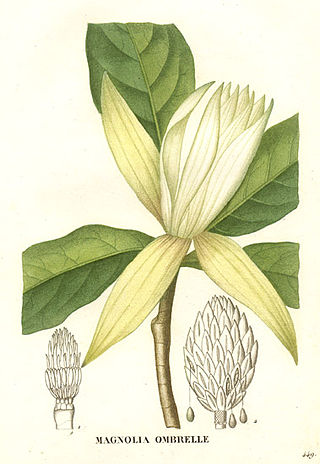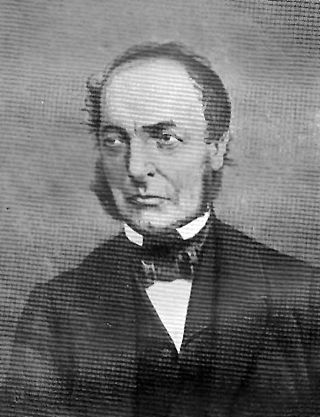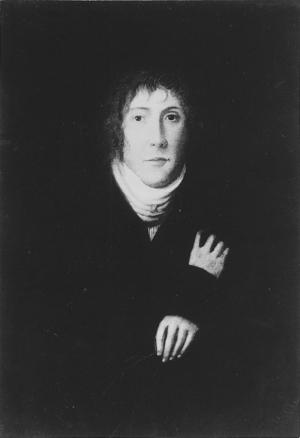Related Research Articles

Joseph Louis Gay-Lussac was a French chemist and physicist. He is known mostly for his discovery that water is made of two parts hydrogen and one part oxygen by volume, for two laws related to gases, and for his work on alcohol–water mixtures, which led to the degrees Gay-Lussac used to measure alcoholic beverages in many countries.

Charles' law is an experimental gas law that describes how gases tend to expand when heated. A modern statement of Charles' law is:
When the pressure on a sample of a dry gas is held constant, the Kelvin temperature and the volume will be in direct proportion.
The year 1808 in science and technology involved some significant events, listed below.
The year 1778 in science and technology involved some significant events.

An endoscope is an inspection instrument composed of image sensor, optical lens, light source and mechanical device, which is used to look deep into the body by way of openings such as the mouth or anus. A typical endoscope applies several modern technologies including optics, ergonomics, precision mechanics, electronics, and software engineering. With an endoscope, it is possible to observe lesions that cannot be detected by X-ray, making it useful in medical diagnosis. Endoscopes use tubes which are only a few millimeters thick to transfer illumination in one direction and high-resolution images in real time in the other direction, resulting in minimally invasive surgeries. It is used to examine the internal organs like the throat or esophagus. Specialized instruments are named after their target organ. Examples include the cystoscope (bladder), nephroscope (kidney), bronchoscope (bronchus), arthroscope (joints) and colonoscope (colon), and laparoscope. They can be used to examine visually and diagnose, or assist in surgery such as an arthroscopy.
The year 1752 in science and technology involved some significant events.
The year 1802 in science and technology involved some significant events, listed below.
The year 1804 in science and technology involved some significant events, listed below.
The year 1845 in science and technology involved some significant events, listed below.
The year 1794 in science and technology involved some significant events.
The year 1806 in science and technology involved some significant events, listed below.
The year 1772 in science and technology involved some significant events.
The year 1761 in science and technology involved some significant events, listed below.

Saint-Léonard-de-Noblat is a commune in the Haute-Vienne department in the Nouvelle-Aquitaine region in west-central France, on a hill above the river Vienne. It is named after Saint Leonard of Noblac. The commune of Saint-Léonard-de-Noblat covers the town Saint-Léonard-de-Noblat and a number of small villages and hamlets, including Lajoumard.

Jean Henri Jaume Saint-Hilaire was a French naturalist and artist, born in Grasse, France.

Ernst Weyden was a scholar and member of the Faculty at the University of Cologne.

Philipp Bozzini was born in Mainz, Germany. On June 12, 1797, he was awarded the degree of doctor of medicine. From 1804 onwards, Bozzini devoted himself virtually completely to develop his instrument, Lichtleiter or "Light Conductor", a primitive endoscope to allow for inspecting the ear, urethra, rectum, female bladder, cervix, mouth, nasal cavity, or wounds. Philipp Bozzini, using the modest means available at the beginning of the 19th century, was able to show to the medical profession the way to endoscopy. With his instrument and ideas, he was three quarters of a century ahead of the technical and scientific possibilities of his time. Historians agree that this instrument using artificial light and various mirrors and specula was the beginning of a large family of endoscopes.
Tracheal intubation, an invasive medical procedure, is the placement of a flexible plastic catheter into the trachea. For millennia, tracheotomy was considered the most reliable method of tracheal intubation. By the late 19th century, advances in the sciences of anatomy and physiology, as well as the beginnings of an appreciation of the germ theory of disease, had reduced the morbidity and mortality of this operation to a more acceptable rate. Also in the late 19th century, advances in endoscopic instrumentation had improved to such a degree that direct laryngoscopy had finally become a viable means to secure the airway by the non-surgical orotracheal route. Nasotracheal intubation was not widely practiced until the early 20th century. The 20th century saw the transformation of the practices of tracheotomy, endoscopy and non-surgical tracheal intubation from rarely employed procedures to essential components of the practices of anesthesia, critical care medicine, emergency medicine, gastroenterology, pulmonology and surgery.
Architectural endoscopy or architectural envisioning is used to photograph and film models of new buildings' exterior and interior in the planning stage. An architectural model of a new building in a 1:500 scale is thus correctly visualized from the perspective of a pedestrian walking by in the street. An endoscope connected to a video camera allows for the creation of walkthroughs, allowing the architect to develop the first draft further, and the public to share and critique the architect's vision of proposed buildings and cities.
Events from the year 1805 in Germany.
References
- ↑ Williams, Roger L. (1988). "Gerard and Jaume: Two Neglected Figures in the History of Jussiaean Classification (Part Three)". Taxon . 37 (2): 233–271. doi:10.2307/1222135. JSTOR 1222135.
- ↑ Dalton, John (1805). "On the Absorption of Gases by Water and Other Liquids". Memoirs of the Literary and Philosophical Society of Manchester. 2nd Series. 1: 271–87.
- ↑ "Joseph Louis Gay-Lussac". Science History Institute. June 2016. Retrieved 21 March 2018.
- ↑ Bowden, Mary Ellen (1997). "Joseph Louis Gay-Lussac" . Chemical achievers : the human face of the chemical sciences. Philadelphia, PA: Chemical Heritage Foundation. pp. 13–15, 53. ISBN 9780941901123.
- ↑ "Jane Marcet". Science History Institute. June 2016. Retrieved 21 March 2018.
- ↑ Morse, Elizabeth J. (2004). "Marcet, Jane Haldimand (1769–1858)" . Oxford Dictionary of National Biography (Online ed.). Oxford University Press. doi:10.1093/ref:odnb/18029 . Retrieved 2013-10-14.(Subscription or UK public library membership required.)
- ↑ Legendre, Adrien-Marie (1805), Nouvelles méthodes pour la détermination des orbites des comètes [New Methods for the Determination of the Orbits of Comets] (in French), Paris: F. Didot
- ↑ Bozzini, P. (1806). "Lichtleiter: eine Erfindung zur Anschauung innerer Theile und Krankheiten nebst der Abbildung". J Practischen Arzneykunde. 24. Berlin: 107–24.
- ↑ Bozzini, P. (1810). "Lichtleiter, eine Erfindung zur Anschauung innerer Theile und Krankheiten nebst der Abbildung". Heidelbergische Jahrbücher der Litteratur. Vol. 3. Heidelberg: Wöhr & Zimmer. p. 207. Retrieved 2010-09-06.
- ↑ Bush, Ronnie Beth; Leonhardt, Hanna; Bush, Irving M.; Landes, Ralph R. (1974). "Dr. Bozzini's Lichtleiter: A translation of his original article (1806)". Urology . 3 (1): 119–23. doi:10.1016/S0090-4295(74)80080-4. PMID 4591409.
- ↑ Rolt, L. T. C. (1958). Thomas Telford . London: Longmans, Green.
- ↑ "Copley Medal | British scientific award". Encyclopedia Britannica. Retrieved 21 July 2020.
- ↑ "Notice no. LH/2463/9". Base Léonore (in French).